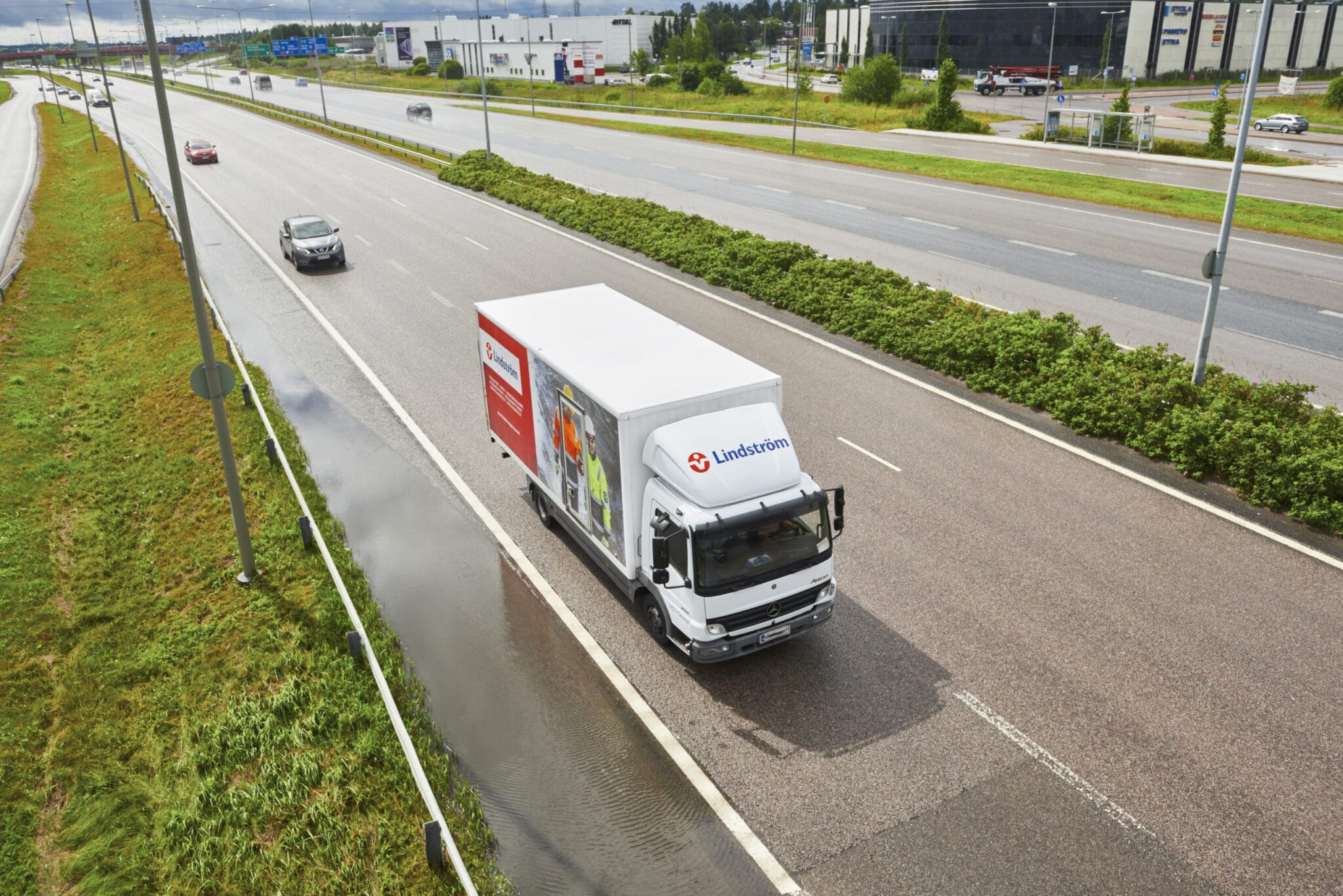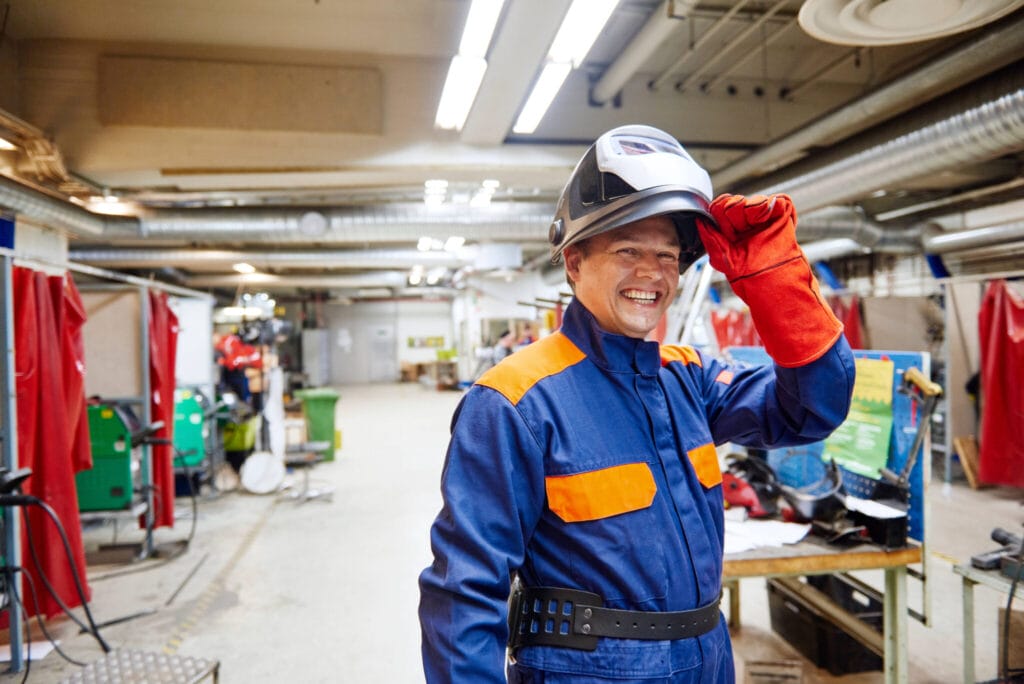
Optimising workwear logistics for efficiency and sustainability
Making tough decisions about workwear is essential for your company’s daily operations. Deciding on the right workwear management solution is therefore one of the most important decisions you can make. Whether you are overseeing production or handling procurement, maintaining clean, safe garments is vital for a healthy work environment.
Moreover, your workwear logistics – how you gather and transport your textiles – is important for sustainability and your company’s operational efficiency.
Consider the journey that workwear typically takes. At the beginning of each shift, employees retrieve fresh workwear from the changing room, change into them and wear them throughout their workday. Once their shift is complete, they place these garments in designated laundry baskets. Someone then transports these soiled garments to dedicated laundry facilities to be washed and inspected. The uniforms are then transported back and returned to storage, ready for reuse in the next cycle of operations.
If your organisation handles textile logistics on its own, you likely have an employee transport these textiles to and from the washing site. If you do this for some time, you might notice that it is not the most optimal solution.
Four challenges to self-managed workwear logistics
- Suboptimal capacity:
Instead of ideally filling the van to capacity every time, there are all too often not enough textiles to optimise deliveries. This not only means a lot of unused space, but a waste of fuel and labour. The end result is more trips and higher transportation costs.
- Negative impact on productivity:
Employees whose core work is not logistics may be pulled away from their main tasks. Putting time and effort into workwear logistics could negatively impact your company’s overall productivity and efficiency.
- Risk of textile loss:
If you do not have a garment tracking system in place, there is a risk of textiles being lost or misplaced during the logistics process. It also becomes challenging to ensure that all textiles have been properly cleaned and handled. This not only results in delays and disruptions, but also compromises hygiene standards and increases safety risks.
- Sustainability challenges:
Handling logistics on your own is usually not the most environmentally friendly alternative. The frequent use of company vehicles for textile transportation contributes to carbon emissions and fuel consumption, which likely conflicts with your company’s commitment to sustainability.
If you recognise these inefficiencies and challenges posed by your current workwear transportation setup, you may consider some alternative solutions. This is where we can come in and help.
Renting workwear provides a tailored logistics solution
We optimise delivery routes to transport textiles effectively and affordably. By maximising van capacity and strategically planning routes to serve multiple customers, we minimise unit costs for your company. With this approach, your company also saves on fuel and vehicle maintenance expenses. Our streamlined logistics ensure prompt and efficient garment delivery, minimising disruptions to your business. The end result is an enhanced workflow and higher productivity for your company.
Naturally, we use our own drivers to transport textiles, ensuring that you do not need to give staff the additional work. Moreover, we go beyond conventional delivery methods by providing direct service to employee lockers and washrooms. This further frees up your employees to focus on core operations.
Finally, we place tags on all of our garments so that you can monitor and track where they are at all times. You can also collect data about when the garment was washed, any repairs done and other important bits of information.
With our logistics solution, you can be sure that we handle your workwear logistics needs with speed, accuracy, transparency and reliability.
Advancing sustainability practices in logistics
When you think about the future of business operations at your company, sustainability is likely an important consideration. We share your concerns. Minimising the impact on the environment is also a core value for us, and at every point in our workwear process, we commit to responsible use of resources.
We optimise delivery loads and routes to minimise the time and resources required for transporting textiles to and from your facilities. This efficiency reduces total fuel consumption. Moreover, by strategically locating laundry facilities closer to customer sites, we minimise transportation distances while ensuring efficient service to our customers. We also use low-emission vehicles.
Looking ahead, we are working toward recycling goals of 100% by 2025, and our aim is to reach net-zero by 2050.
Improving textile logistics in a variety of sectors
We work hard to improve workwear logistics for a wide range of companies in many sectors. With years of experience serving diverse sectors like manufacturing, automotive, metal and machinery, and print, we bring valuable expertise to each partnership. By understanding the unique challenges of each industry, we deliver tailored solutions that boost efficiency, reliability, and sustainability across the board.
A key part of Lindström’s strategy is to guide customers toward greater sustainability. We do this via easy-to-use textile services that we deliver with passion, care and the human touch. By deepening our industry insights and using digital technologies, we aim to cut our carbon footprint, recycle all end-of-life textiles, and offer transparent, optimised solutions. We focus on streamlining our customer’s processes and helping them high their commitment to sustainability. We believe in long-term bonds and growth as we work to help our customers – spanning 23 countries – thrive in a sustainable way.




